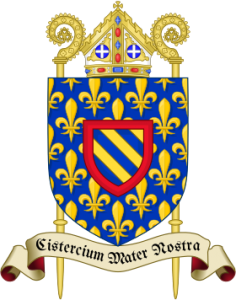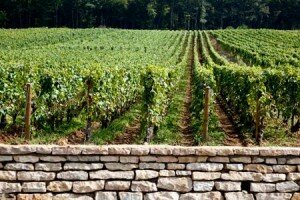In this raw day, who had believed that these 3 small letters would have dreamt the world’s wine ? This is an article cru 2015 to grow your knowledge, without being crude 😉

900 years before the win of the French team in the World Cup (each one has his own marker 😉 ), so in 1098, Robert de Molesme funds the order of the Cistercian, with the construction of the abbey of Cîteaux. “And what ?” you should say ? Let’s know that this abbey is located today at Saint-Nicolas-les-Cîteaux, small village about ten kilometers from Nuits-Saint-Georges or Romanée Conti… Ah ! You are interested now !!! Here, no time for laughing: “ora et labora” (pray and work), this is their motto. A strictness applied in all the fields, especially which of the wine with the birth of the Cru.

Past participle of the verb “croître” (grow), it comes straight from the Latin “crescere”. “Creu” at the beginning, the “-e” was removed and replaced by a circumflex accent. Actually “cru” is the past participle of “croire” (believe) whereas “crû” those of “croître” (grow). God to know for the Trivial Pursuit 😉 . The monks defined some plots, recognizable by their own features, vintage after vintage, and created a map of the Burgundy’s crus…currently used. And some splots showed features so specifics (nature of the ground and climatics conditions), that gave birth to the famous Climats (like Montrachet), which were wall up and call Clos (past participle of “clore”= enclose), like the Clos Vougeot in 1330.

The spreading of the religious orders, especially of the Cistercians, favored the expansion of this world not so crude… But be careful, the Burgundy’s cru isn’t equivalent to another cru somewhere else. In this way, in Champagne, it refers to a scale of crus created in 1911, corresponding to the quality of the grape. A village listed 100% has the title of grand cru. The classification has an impact on the price of the grape, more than on the quality.
Concerning the left bank of Bordeaux, the classification of 1855 from the Premier to the Cinquième Cru, is a classification of the château and not the plot. So, a vineyard bought by a château Premier Cru 1855 could be classified Premier Cru. By the way, it frequently raises question, because 160 years later, the owners moved, some plots resold or divided. Today, less than 5% of the owners are descendents of whose of 1855…
Well, enclosed in their close, the monks trusted in the vine to make grow crus that we can’t spit 😉





Article très instructif… Et quelle belle date que 1098 😉
Merci. Et c’est vrai qu’en ces temps-là, les moine savaient y faire !!!
Cher confrere,
Je serais curieux d’avoir vos sources sur 1855 et les parcelles… je ne suis pas certain de bien comprendre ce que vous dites. Pouvez vous preciser votre pensee s’il vous plait…, des details manquent. Cordialement
Bonsoir Olivier,
Sur 1855, il s’agit d’une classification des courtiers, qui en ressortant leurs carnets, ont fait une moyenne des prix des vins vendus. Les plus élevés ont été classés Premier Cru, Deuxième Cru, … Le débat est de savoir si ce classement est encore viable, avec les changements de propriétaires notamment. Par exemple, les millésimes de Chateau Margaux du début des années 1970 sont désastreux alors qu’il appartenait à la famille Ginestret. Puis les millésimes de la même fin de décennie sont merveilleux, notamment 1978, avec un changement de propriétaire (famille Mentzelopoulos). Un Lynch-Bages (5e cru) se vend plus cher que des 3e ou 4e cru.
Quant aux parcelles, elles ont pu bouger. Chateau Lascombes, 2e cru classé en 1855 avec 27ha, en fait 84 aujourd’hui, sans pour autant avoir subi de modification dans le classement.
Comme c’est un débat récurrent, je voulais y faire allusion justement pour voir plusieurs opinions. J’espère avoir éclairci vos doutes sur mon article.
Cordialement.